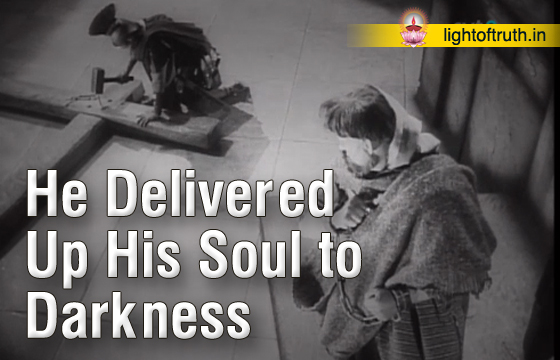Azadi ka Amrit Mahotsav Kolkata event honours four Clergymen
Pope Francis asks businesses to support working women: They’re ‘afraid to get pregnant’
Study: Christianity may lose majority, plurality status in U.S. by 2070
Indian politician declines Magsaysay Award under party pressure
Like John Paul II, Pope Francis heads to Kazakhstan during time of war

Paul Thelakat
“Everyone knows how they hung there on the crosses, and who they were that stood gathered around him … But a little further down the slope, rather to one side, a man was standing …” “His name was Barabbas. This book is about him.” The Swedish writer Pär Lagerkvist (1891-1974), who received the Nobel prize for literature in 1951 wrote the novel Barabbas. The narrative concerns the impact on Barabbas of being released instead of Jesus. This event leads Barabbas to reject his former way of life, without finding a meaningful alternative. The author is concerned with exploring the existential issues confronting Barabbas in the light of Jesus’ crucifixion. Gospel accounts of Jesus’ trial before Pilate which ends in Barabbas being set free, while Jesus is condemned to be crucified (Matt. 27:15-26; Mark 15:6-15; Luke 23:19-25; John 18:38-40) This journey is punctuated by two further executions which confront Barabbas with the suffering of believers: first, a harelip, an outcast with whom Barabbas had a brief sexual relationship, is stoned because of her belief in Jesus as Saviour. He kills one who stoned her and buries her body second. Sahak, a slave to whom Barabbas is chained in the Roman copper mines, is crucified also because of his faith in Jesus. At the end Barabbas is crucified together with a number of Christians for whose death he is indirectly responsible. When Sahak dies, “quietly and unobtrusively”, Barabbas sinks “down on his knees as though in prayer” (p. 111), yet “he was not in fact praying. He had no one to pray to” (p. 113). Sahak refuses to renounce his faith, while Barabbas, confronted by a direct question from the governor, confirms, “I have no god”, and states that the name of Jesus is engraved on his slave’s disk, not as a sign that he belongs to Him, but because he wants to believe (p. 106). “Once and once only had he been united to another, but that was only with an iron chain. Never with anything else but an iron chain.” (p. 121.) “When he felt death approaching, he said out into the darkness, as though he were speaking to it: – To thee I deliver up my soul” (p. 133).
If Barabbas’ dying words hint at the presence of a hidden and unnameable Other, the events he witnesses, viewed from the outside, suggest that God is simply absent. Perhaps, his Otherness is such that he inevitably appears to be absent from this world; perhaps, hiddenness and absence are twin aspects of an elusive presence. Barabbas never finds an answer to the question of who Jesus was and of what his suffering meant. His final words, and the darkness which surrounds him at the end suggest that he finds peace by embracing these impenetrable mysteries.
Lagerkvist is a Christian, perhaps he does not become dogmatic and openly left the character undecided as regards his faith, still groping in darkness. Lagerkvist is perhaps an existential thinker but not in the company of Sartre and Camus, not a follower of Nietzsche. Is he not presenting the average Christian of the Continent after the second world war – a nominal Christian of Kierkegaard’s Christendom – the political kingdom which does not have Christianity within. A Christianity of the cultural attire of rites and rituals having forgotten the essence of it. The novel presents a person who owes his life to Christ but not able to respond in responsibility, for he was always an outsider. He was always kicked out of human world. One who lived with his moral insensibility hardened and frozen in violence? He was never recognised as a human being. The arche-writings in his flesh have been never read, his memory of the Origins are never recollected. Now it is his predicament to regain his lost humanity for which he waits in a darkness. He was left alone in life. “One thinks he is isolating himself and thus is freer, but in reality, he only becomes more a slave of fashion or of the dominant mentality. This is the first great lie. The price of isolation is not freedom, but slavery.”
Lagerkvist, is perhaps working within the framework provided by the legendary “Wandering Jew” myth. Joseph Gaer in his The legend of the Wandering Jaw, summarize the basic pattern of the myth of Barabas as well:
“It is understandable that in the legends the man so doomed is presented as a Jew, since, in the days of Jesus, only Jews were either his Disciples and followers, or his repudiators and detractors. And this Jew so doomed must wander as a symbol to the world of the Second Coming— or is a symbol of the repentant sinner, or the unrepentant heretic.”
Gaer adds that, through legend has been passed on from generation to generation in a multitude of versions which deviate from its central pattern, it became on a general level refined into a universal symbol which conveyed man’s preoccupation with the enigma of death and the search for redemption, This is essentially the same Lagerkvist places the issues of “sin,” guilt, and “redemption,” is hope to establish, within a humanistic rather than a theistic context.
Leave a Comment